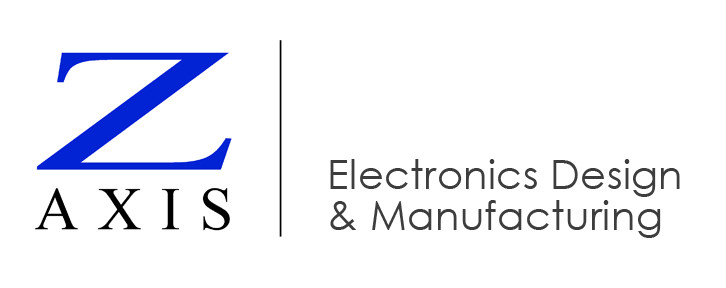Z-AXIS uses thermal profiling to optimize our soldering process and, unlike other manufacturers, creates a thermal profile for each board.
Thermal Profiling for Each Board
During reflow and wave soldering, printed circuit board assemblies are conveyed through an oven with multiple zones. To avoid soldering defects, each part of the PCBA needs to reach and remain at the right temperature – and for the right amount of time.
That’s why Z-AXIS measures and records a thermal profile for each board. We then use this data to optimize our soldering process. Other manufacturers select a standard thermal profile based on the number of board layers, but close-enough isn’t good enough with time, temperature, and soldering.
Time is important because heating a board too quickly can cause splatter and solder balls. But heating too slowly can cause the flux to dry-out before good solder joints are formed. Temperature is critical because overheating can damage components. Insufficient heating can result in poor solder joints.
By measuring and then optimizing the thermal profile for each PCBA, Z-AXIS accounts for how much heat-absorbing copper is on a board and where that copper is located. If a board has heavier copper areas near lighter ones, the thermal profile changes.
Kic Thermal Profiler
Z-AXIS uses a thermal profiler made by Kic with eight probes that attach to a PCBA. The device features a computer inside an insulated box that travels with the board inside the oven. After a test board is soldered, we plug-in the computer and optimize the thermal profile for production use.
Reflow soldering is more complicated than wave soldering because there’s both flux and solder involved. Plus, the board and all its components are heated – and on both sides. Larger components absorb more heat than smaller ones, too.
In addition, our reflow oven has eight or more temperature zones. Because both the top and the bottom of the PCBA are heated, there are 16 possible adjustments we can make. Including board speed, that’s 17 different variables.
During reflow soldering, the goal is to activate the flux without getting it so hot that the alcohol flashes off. There’s also only about 10 degrees of difference between liquid solder and damage to the board. That’s a narrow temperature band, and lead-free solder can take higher heat than the board itself can handle.
Wave soldering is less complex because only the bottom of the board is heated, and there are only four zones in the oven. Including board speed, that’s just five variables to consider. Still, it’s important to heat the board evenly. And if the flux stays too wet, bubbles are created and the solder won’t have a good wave.
Thermal Profiling Reduces Soldering Defects
By measuring and optimizing the thermal profile of each PCBA during pre-production, Z-AXIS reduces soldering defects. Few high-mix electronic manufacturers take this approach, but thermal profiling is another way that Z-continuously improves quality.
